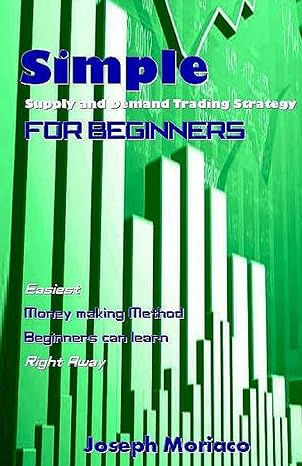Question
1. If you deposit $12,000 in a bank account that pays 9% of interest annually, how much will be in your account after 5 years?
1. If you deposit $12,000 in a bank account that pays 9% of interest annually, how much will be in your account after 5 years? Round your answer to the nearest cent.
2. What is the present value of a security that will pay $13,000 in 20 years if securities of equal risk pay 12% annually? Round your answer to the nearest cent.
3. Your parents will retire in 27 years. They currently have $400,000 saved, and they think they will need $1,700,000 at retirement. What annual interest rate must they earn to reach their goal, assuming they don't save any additional funds? Round your answer to two decimal places.
4. You have $36,403.52 in a brokerage account, and you plan to deposit an additional $3,000 at the end of every future year until your account totals $220,000. You expect to earn 11% annually on the account. How many years will it take to reach your goal? Round your answer to two decimal places at the end of the calculations.
5a. What's the future value of a 12%, 5-year ordinary annuity that pays $200 each year? Round your answer to the nearest cent.
5b. If this was an annuity due, what would its future value be? Round your answer to the nearest cent.
6. An investment will pay $150 at the end of each of the next 3 years, $250 at the end of Year 4, $400 at the end of Year 5, and $600 at the end of Year 6.
-
If other investments of equal risk earn 6% annually, what is its present value? Round your answer to the nearest cent.
-
If other investments of equal risk earn 6% annually, what is its future value? Round your answer to the nearest cent.
7. You want to buy a car, and a local bank will lend you $20,000. The loan will be fully amortized over 5 years (60 months), and the nominal interest rate will be 8% with interest paid monthly.
-
What will be the monthly loan payment? Do not round intermediate steps. Round your answer to the nearest cent.
-
What will be the loan's EAR? Do not round intermediate steps. Round your answer to two decimal places.
8. Find the following values using the equations and then a financial calculator. Compounding/discounting occurs annually. Do not round intermediate calculations. Round your answers to the nearest cent.
-
An initial $400 compounded for 1 year at 3%.
-
An initial $400 compounded for 2 years at 3%.
-
The present value of $400 due in 1 year at a discount rate of 3%.
-
The present value of $400 due in 2 years at a discount rate of 3%.
Step by Step Solution
There are 3 Steps involved in it
Step: 1

Get Instant Access to Expert-Tailored Solutions
See step-by-step solutions with expert insights and AI powered tools for academic success
Step: 2

Step: 3

Ace Your Homework with AI
Get the answers you need in no time with our AI-driven, step-by-step assistance
Get Started


